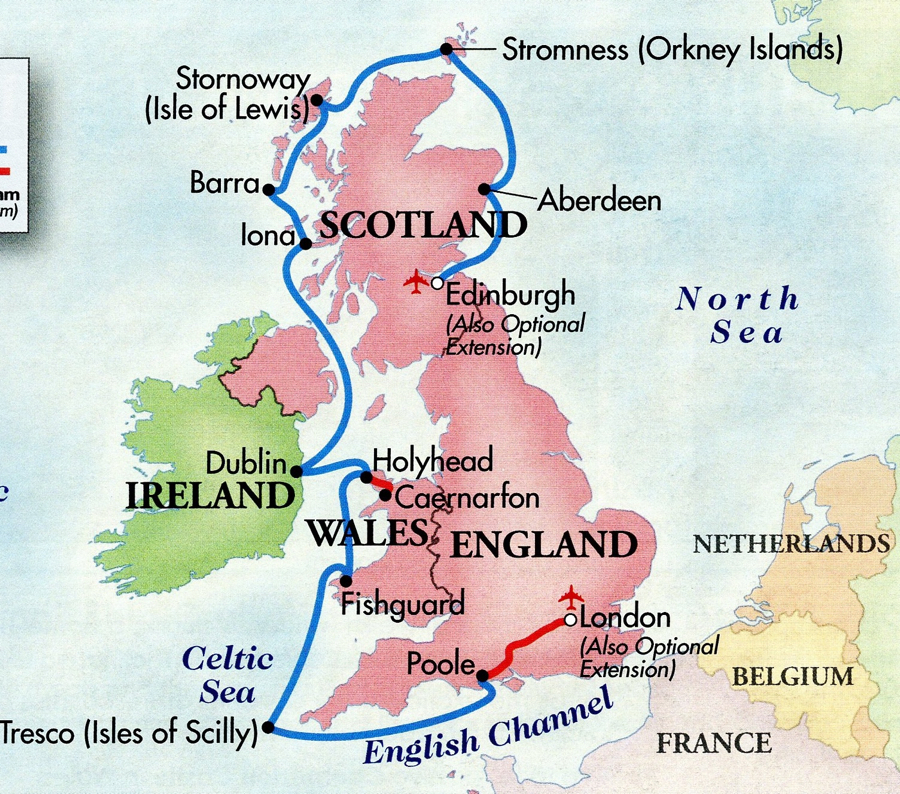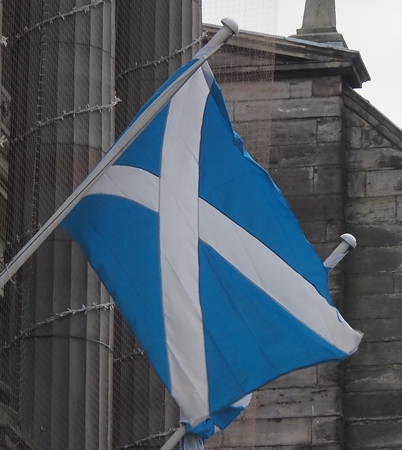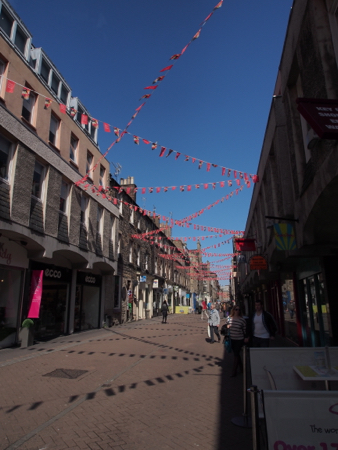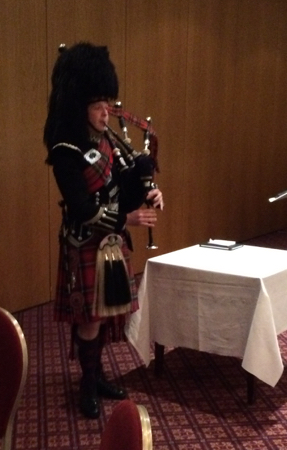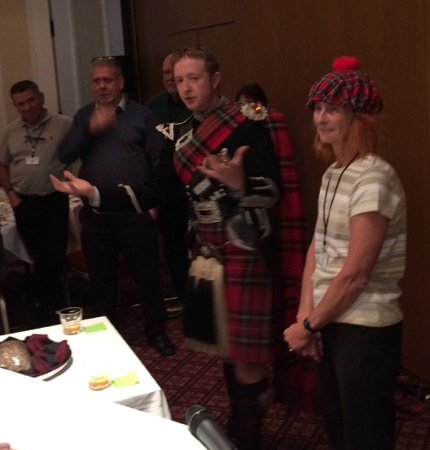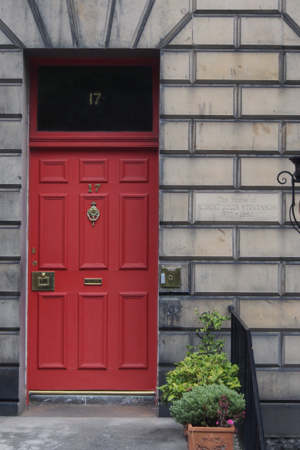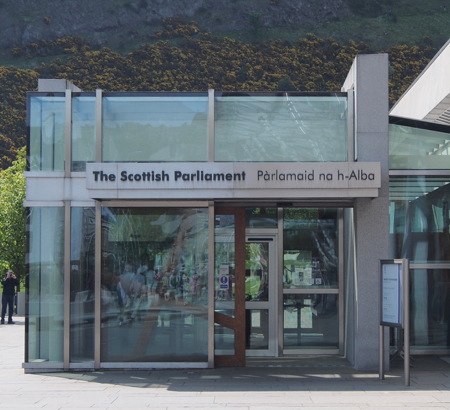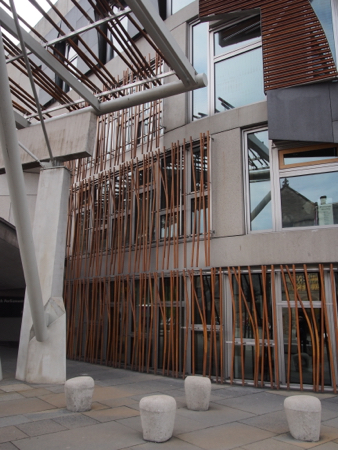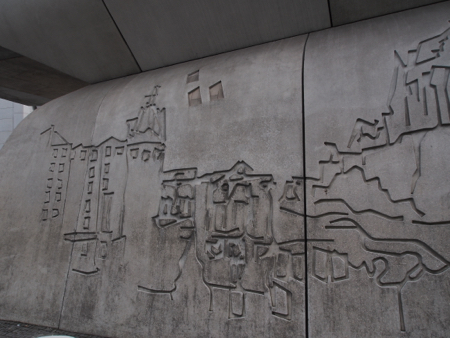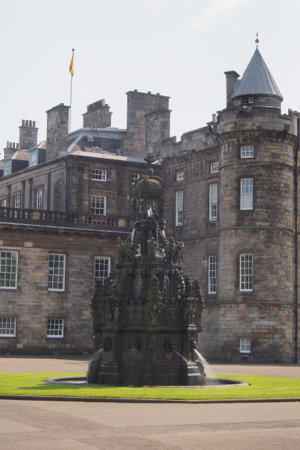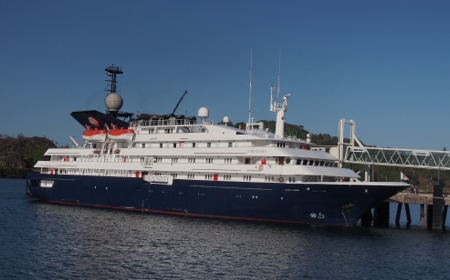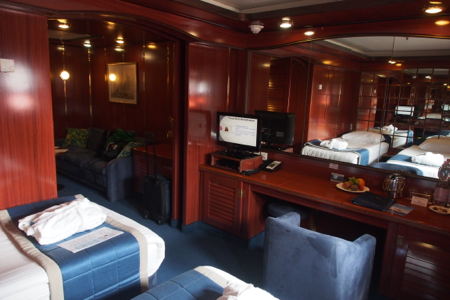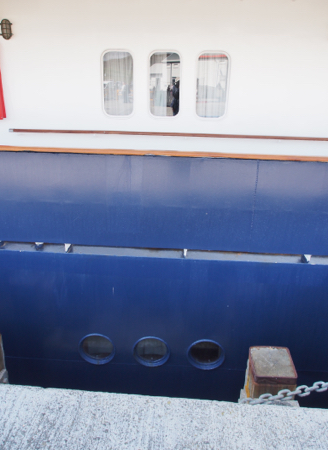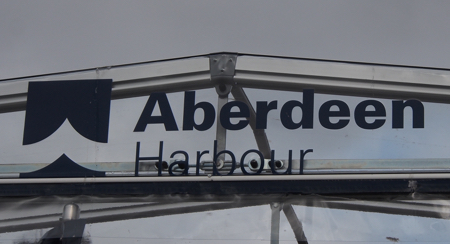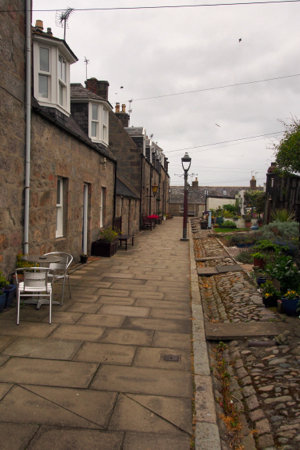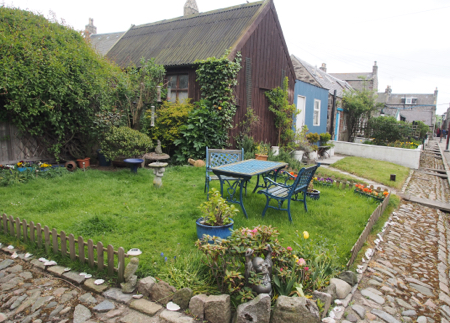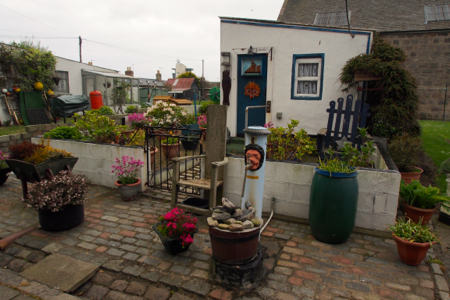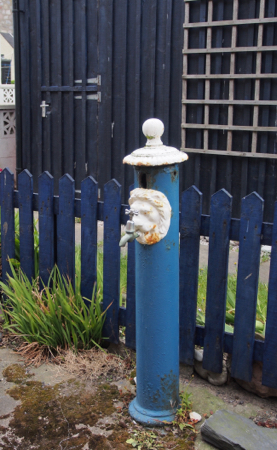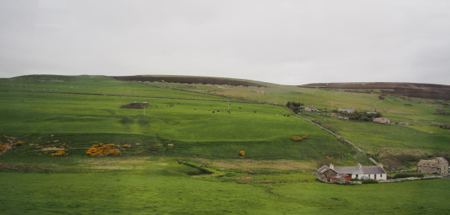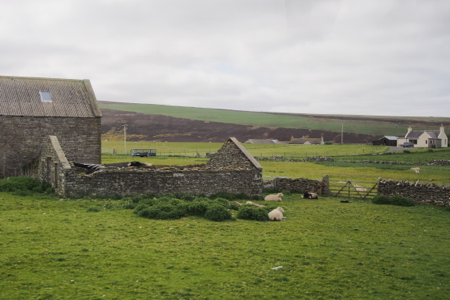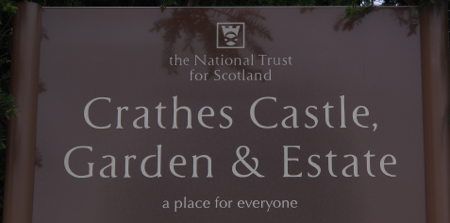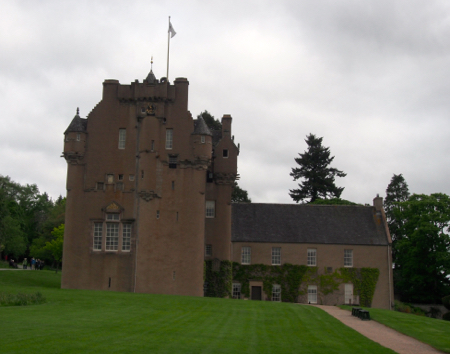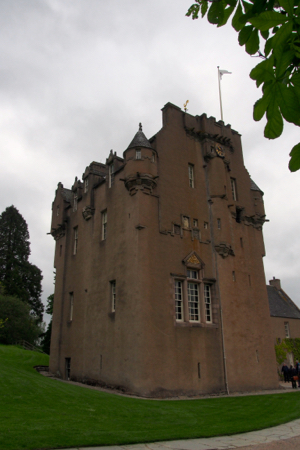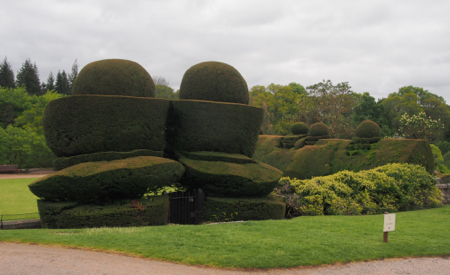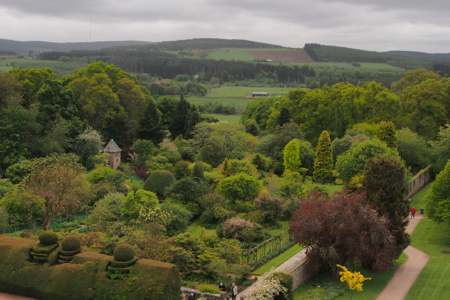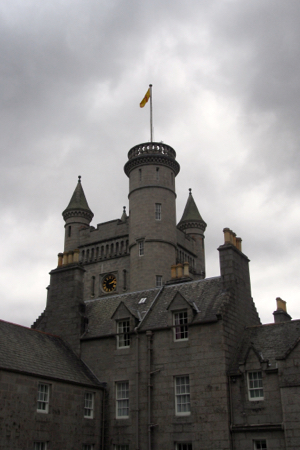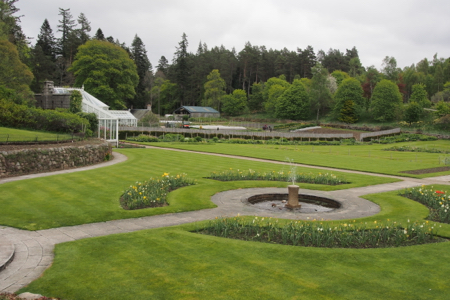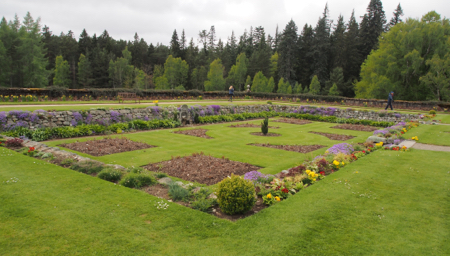Grand Circle Travel: Maritime Jewels of the British Isles and Ireland
May 22 - June 5, 2016
This section details the first of our back-to-back tours in the United Kingdom, with one day in Ireland, during May and June, 2016. Both tours included a few places we have previously visited and many new and interesting places and experiences. On each tour, on days when we were in Wales, we took a day and rented a car, a totally new foreign experience for us. In both cases, the cars were small, manual transmission vehicles (a Ford Fiesta and a Vauxhall) - automatic transmission cars cost more than three times as much to rent! We successfully negotiated the narrow roads and traffic circles - Marge only drove across one circle that was painted on the road instead of defined by a curb - about panicked the driver already in the circle but at least I knew there was a slight problem. Driving on the "wrong" side presented no problems.
Itinerary
Maritime Jewels of the British Isles and Ireland
Sun., 5/22/16 – Estes Park to Newark to Edinburgh, Scotland
We got up at 4:30 AM, left for the airport at 6, arrived, as usual, with more than three-hours until our plane was to leave at 11:20 AM. The United flight to Newark was on time but the United flight to Edinburgh was an hour and 20 minutes late leaving – something about moving the plane to our gate – but we made good time in the air and arrived at 9 AM Scotland time, instead of 8 AM, on Monday.
Flag of Scotland
Mon., 5/23/16 – Edinburgh, Scotland
A Grand Circle representative met us after we exited customs and drove us to our hotel, The Roxburghe. We had stayed there on our last trip to Scotland.
GCT program directors met us in the lobby and gave us a packet of information. After a 90-minute nap, we went out to Rose Street to find something to eat. It was noon and the host of pubs, cafes, and sandwich shops on this pedestrian street were just opening up. We had BLTs with side salads at Valerie Patisserie and then went back to join one of the directors, David, for an orientation walk around the hotel area which is in the “new town” with Georgian style buildings from the late 1800’s.
We left the group and strolled through part of Princes Street gardens. The sun and flowers and green grass were very pleasant.
Rose Street
After a ½ hour wine social, a bagpiper led all 95 of us into the dining room. We sat at tables for 10 and listened to the four program directors – Phil, George, David, and Gilly – who gave us orientation information. We were finally served the first course of our four-course Scotch dinner. The bag piper played and then walked among the tables and told us about the bagpipe and his official dress. Since the second course included Haggis, we had to “Salute the Haggis.” Our bagpiper, Andrew, played a tune as I followed carrying a large lump of Haggis on a platter. I was wearing a tartan tam with fake red hair. I set the platter on a table and Andrew recited a Robbie Burns poem in the ancient Scots language. Before the 4th verse I was to use his dagger and shriek and stab the lump of Haggis three times. When he finished the poem, and the Haggis was dead, Andrew and I slugged a shot of whiskey (only his was ginger ale – mine wasn’t!). It was all in good fun. We were then served Haggis with pureed squash and potato with a sauce that made the Haggis taste good. Finally we were served salmon with scalloped potatoes and something like kale and then a traditional dessert of cream, nuts, and dried fruit. We waited for coffee and the event took more than three hours.
Andrew, the bagpiper
"Salute the Haggis" ceremony with Andrew and Gale
Haggis
Tues., 5/24/16 – Edinburgh to our Ship, MV Corinthian
We went to breakfast at our hotel at 6:30, put our suitcases outside our room at 7:30, and waited until 9:30 to board our “blue group” bus to take a tour of Edinburgh with a local guide, Sandy. Willie, the driver, took us around the “new” town where Joseph Lister (pioneer of antiseptic surgery), Robert Lewis Stevenson, etc. once lived. The guide pointed out this and that and explained about the Georgian style home. We got off the bus to walk past the odd modern Scottish parliament building and to look into the Abby of St. David ruins and the Holyrood palace.
Home of Robert Louis Stevenson
New Scottish Parliament building entry
New Scottish Parliament building - the natives aren't sure they like it all that well, but it does have some attraction. The architect apparently died before he could tell them what it all means.
New Scottish Parliament building - mural along the side walls
Holyrood Palace - central fountain
We drove around more of the city and finally made it to the Port of Leith where our ship was docked next to the decommissioned royal yacht, Britannia.
We had our passports checked, went through security check, and then got our pictures taken at the reception counter on the ship. Our cabin is #246 and is surprisingly large. It is almost a two-room suite with a bedroom with TV, desk and refrigerator and a separate sitting area with a couch and soft chair and table. We even have a walk-in closet! and lots of drawers and cabinets. Even the shower is twice as large as usual on a ship.
Royal Yacht Britannia
MV Corinthian
Our cabin
Our cabin
The three portholes are our cabin - provides a lovely view while in some ports
These cute things often appear in our cabin after dinner
After a bountiful lunch buffet we wandered around the ship to see where things were. Then we started to orientation briefings: the mandatory life boat drill, the introduction of the crew, and the captain’s welcome drink before the captains dinner. Marge and I had invitations to dine at the captain’s table. Since we have taken the most GCT tours in this group, we got the honor to sit next to the captain. Capt. Clek is from Turkey (Ismer), so he was very easy to talk to.
At the orientation meeting earlier the captain showed us the computerized maritime weather forecast for Edinburgh to Aberdeen that we will sail tonight. We will be heading into a stiff head wind causing the ship to pitch. He calls it “Bang-Bang” because of the sound of the ship rising with a swell and then slamming down into the trough. He calls roll, “Whee-Whee” because the ship lists to the side, “Whee” and then to the other side, “Whee.” We will be dosing with Dramamine tonight!
We set sail at 10 PM and I went outside on the deck in the bow (it was windy and cold) and watched as the captain and pilot took us from the dock and into a lock that protects this port from the tide. We dropped 4 ½ meters (almost 15 feet) and then started to sail and rock and roll! We went Bang-Bang all night. Thank goodness for my seasickness patch.Wed., 5/25/16 – Aberdeen, Scotland and Balmoral Castle
We had breakfast at 6:30 and not all 92 of us made it to breakfast, probably due to the rough sea last night. At 8:15 all four groups headed off the ship to our four waiting motor coaches for a city tour around Aberdeen, which is the third largest city in Scotland and lies between the Dee and the Dunn Rivers. It is called the Granite City because the buildings are built with granite blocks. The mica in the granite shines in the sun, giving it a silver sheen, and earning the name “silver city.” We drove through the area of King’s College, established in 1495, and passed a cemetery where the man who created crossword puzzles is buried “6 down and 4 across.”
We got off the bus to be led by Phil around the village of Footdee, once a fishermen’s village, and now inhabited by others with gardens and pot sheds instead of places for repairing nets and lobster pots on the commons in the middle of the square of old, small, granite houses. They used to fish for herring, which are called “silver darlings.”
Restaurant sign - they use to fish for herring in this area, thus "silver darlings."
Street in the Footdee section
Footdee yard
Footdee yard
After a lovely drive through the Scottish countryside, we visited Crathes Castle, built around 1596 and lived in by the Burnett family for 400 years! We walked through the castle home. The ground floor has walls six-feet thick and houses the kitchen, pantry, and cooking fireplace. We followed the path up circular granite stairs to look at the dining room, bedrooms, nursery, and courtrooms. Originally the living spaces in the tower only had narrow slits for windows because glass was too expensive and the narrow opening gave more protection to the family from various invaders over the centuries. The outdoor gardens were splendidly manicured. There were all kinds of flowers and shrubs and the grass lawns were like a putting surface.
Scottish countryside
Farmyard
Crathes Castle
Crathes Castle
Gardens and adjoining hillsides
After the Crathes Castle tour, our groups were divided, with half returning to the ship and the rest of us taking the optional tour to visit Balmoral Castle where the Queen still spends ten weeks, including all of August. The Castle is of Baronial architecture with round turrets and is built of white granite blocks. There are 40 Highland ponies, 20,000 deer, culled by guests of the royalty, and lovely gardens and greenhouses. A sunken rose garden is near the castle. The only room tourists are allowed in is the ballroom. The exhibits show what a royal dinner might have been like. We walked to the stable area and looked at old horse carriages and photos of Elizabeth and Phillip and their family that have been used on some 80,000 Christmas cards sent to staff and VIPs from 1952 to 2015. It was interesting looking at the royal family as they aged over the years.
It was only 37° at Balmoral. We were all cold and hope the next days will warm up. At least it wasn’t raining.
Balmoral Castle
Balmoral Castle
Fancy chimneys
Balmoral Castle gardens
Balmoral Castle - the sunken rose garden
The Queen's ponies
Our long rides today were through beautiful green grass fields with cows, but mostly sheep with young lambs, and timber forests. We got back to the ship at about 5:30. A hot shower and hot chocolate revived us for dinner. I had roast turkey and Marge had mahi mahi as the main entree of the five-course served dinner. We ate at a table for four with Phil and Lis, a single traveler on our trip.
Tonight our ship will sail through Bang-Bang and then Whee–Whee into Stromness on the Orkney Islands. A bagpipe band played on the dock before we sailed away.
| Return to Top | Return to Itinerary | Return to Trips page to view other trips | Return to Dreamcatcher Home Page |
